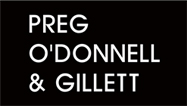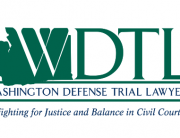by Eric Gillett, Managing Partner
Published in the King County Bar Association’s BAR Bulletin
October 1, 2022
We are now well past the two-year anniversary when civil litigation turned upside down. Our courts came to a standstill. Pending trials were immediately continued and those underway were either quickly concluded or stopped midstream and held in abeyance for several months while our judges attempted to find a way to move forward, however awkwardly.
Mediations, like trials, which had been conducted in person almost exclusively, were shot into a virtual world almost overnight without much to guide us. Thankfully, at the same time the world seemed to close its doors, technology opened a new one, Zoom. I imagine that most of you are like me and found this “new” technology both fascinating and perhaps, depending on your generation, a little intimidating. New instructions, new buttons, a Hollywood Squares screen of faces. For me anyway, I was witnessing what Walt Disney promised me in his 1950s House of the Future. It could not have landed at a more appropriate time.
And now, more than two years later we are still in a virtual world for much of our civil litigation practice. Sure, trials are live again in limited areas, but the backlog of criminal cases keeps many civil cases on standby. Even where courts are conducting civil trials virtually, criminal trials are still in our way. Until the doors to our courthouses are fully open again, this problem is going to continue.
This roadblock has only increased the need for alternatives to trial. Civil cases need resolution, whether that is a decision made by twelve strangers or a mutual agreement by two or more parties. In our new normal, mediations have become more vital than ever before.
As I work with more and more young lawyers inside and outside my firm, I try to encourage them to think about innovative ways to resolve cases short of trial. To be sure, I am a believer that almost every case must be prepared with the idea that one day it may go to trial. One of the first things I ask a young lawyer with a new case is what will the jury instructions tell the jury to do?
But statistically, the chances of going to trial are small. As a consequence, I remind them that holding back a smashing piece of evidence to use at trial is likely to be lost to history. They will not get their Perry Mason moment in front of a jury and watch a witness fall apart based on their timely and deft revelation of a “smoking gun.” Instead, they should seek ways for that evidence to be used to improve their chances to resolve the case either by motion practice, one on one negotiation with opposing counsel, or mediation.
Mediation often suffers from the one-dimensional tactic of shuttle diplomacy and the simple exchange of numbers by an uninterested mediator until both parties are too close to walk away. It works, but it also fails, and always leaves clients dissatisfied with the process, jaded by the experience, unimpressed by their lawyers, and wishing things had been different. For plaintiff lawyers, unless the numbers worked in their client’s favor, they are unlikely to see any benefit from a referral. For defense lawyers, they are positioning themselves to be sidelined in favor of the next firm on an insurance carrier’s approved list.
Mediation, like trial, is an opportunity to present your best case and do the job you were retained for: getting the best possible result for your client. While there are some jurisdictions that encourage “opening statements,” most do not. Certainly, that is true in the Pacific Northwest, where opening statements are almost non-existent in mediation. But that does not prevent you from drafting a mediation letter where you explain not only what the case is about, what evidence you have amassed during discovery, but also why a judge or jury is more likely to agree with your position. If you have one, your smoking gun should be exposed or at least hinted about at mediation. It may be your best opportunity, used wisely by your mediator, to help the parties move closer together.
As a mediator, I look for ways to communicate each side’s position to the other side without alienating either side. I find it unhelpful if I simply tell one side or the other that the view in the other room is much different than theirs. Everyone already knows that. Instead, I find it useful if I can help each side find something to appreciate about the other side’s position, even if they are adamantly at odds with the other side’s proposed resolution. True smoking guns are rare but reasonable opposing viewpoints are common. It is the reasonableness of your position that I want to communicate to the other side. The rationality and acceptance of the possibility that others might agree with you that is essential. In other words, I am trying to get both sides to be willing to be willing to accept what is being proposed in the other room. What you say in your mediation letter and what you bring to the mediation through your advocacy is essential to this process.
Early on in a mediation, it is not unusual for both sides to see a wide, often unbridgeable, gap between them. Neither side is willing to come all the way to the other side’s number or suggested resolution. And it can seem like a waste of time when that situation does not change over the course of a few hours. But I have learned over more than 35 years in this business, that time takes time. It’s not that one side needs to outlast the other’s recalcitrance. Instead, the process of moving parties from an extreme position to a more moderate position takes time and energy. Human nature is stubborn in that regard. We become enamored of our beliefs. We might attach our ego to our positions. You certainly have clients who often come into a mediation with unreasonable expectations for the result. Even more problematic is when those expectations are being generated or supported by someone not participating in the mediation, like a trusted friend, family member, or insurance adjuster. That issue is worthy of a completely different discussion. But with time, support, and a simple request that each side be willing to be willing to consider the other side’s way of thinking, we usually get to yes. Or at least maybe. And once we get to maybe, we have a better chance of getting to a resolution that makes sense to both sides, even if it is not the resolution they wished for when they turned on their computer and signed onto Zoom.
[ Download a PDF of this article here. ]
Eric Gillett is a founding partner of Preg, O’Donnell & Gillett. He is licensed in Washington, Oregon, and Alaska. He is available to mediate your cases and help you navigate toward a solution. He can be contacted through his legal assistant, Jasmine Reddy, at 206-287-1775 or jreddy@pregodonnell.com. While in person mediations can be arranged with all participants fully vaccinated, Zoom mediations are also available and encouraged.





